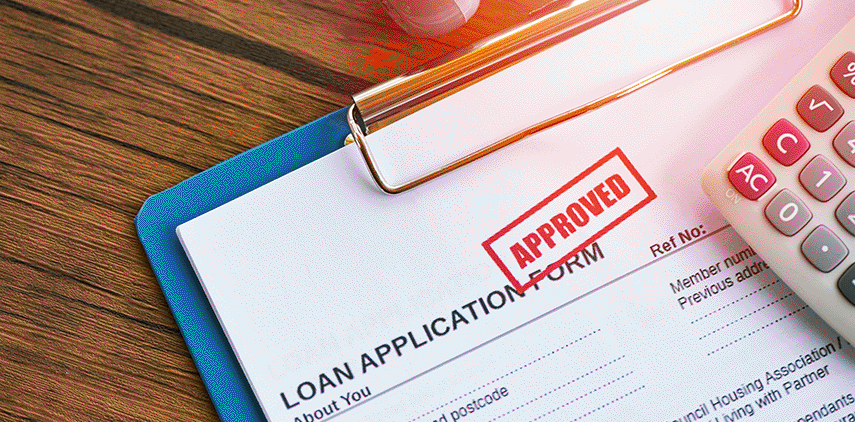With 0% car loans becoming more difficult to obtain, knowing how to compare car loan rates is essential to securing the best deal. You will have to spend some time shopping around, but finding the lowest rate for your car loan can save you money.
What Does a Car Loan Consist Of?
A car loan consists of three parts, each playing a role in the total amount you pay for your car.
Loan amount
The loan amount is the dollar value the lender gives you for buying a car. Most car loans cover the car without any add-ons you elect. If your credit is good enough, you might be able to roll any add-ons as well as fees and taxes into your car loan.
New vehicle prices are up more than 12% year over year, while used car prices have skyrocketed by more than 40%. This translates to an average loan amount for new cars in the United States of $39,721, while the average for used vehicles is $27,291. Average monthly payments are $644 and $488 for new and used cars.
Loan rate
Your auto loan rate, also known as the annual percentage rate (APR), determines how much more than the car price you will end up paying over the life of the loan. The interest rate you get on your car loan depends on your income, credit score, and the rates as set by the federal reserve.
The most important determining factor for your car loan interest rate is your credit score. Each lender has a different way of arriving at the specific loan rate they are willing to give you, but your credit score is the primary variable in their calculations. A higher credit score shows more creditworthiness, resulting in a lower interest rate.
A poor credit score can result in an APR approaching 20%, while good credit can lower your interest rate to as low as 3% in some cases with lenders such as Bank of America.
Loan term
The loan term is the duration for which you will be making payments on your car loan. The shorter the length of the loan, the higher your monthly payments will be. However, shorter loan terms translate to lower overall interest payments.
Electing for longer loan terms can reduce your monthly cost but add significantly to the total amount you will be paying back. Loan applicants who can afford to make higher monthly payments can benefit from electing a shorter loan term to reduce their overall outlay.
The most common loan terms in the United States are between three and seven years, while the average car loan term is 72 months.
How to Compare Car Loan Rates
Each financial institution that offers car loans has advantages and disadvantages for the consumer. Understanding the differences between lenders can help you consider which is best for your financial situation.
Types of Car Loans
You can get a car loan from a bank, a credit union, or directly from the dealership from which you purchase the vehicle.
Bank loans
Securing a car loan through a bank can offer several advantages over your other options. Banks offer loyal customers better borrowing terms when they hold multiple products with them.
If you have other loans or a savings account with the bank you currently do business with, you can get a lower rate for your car loan than the bank average. Your bank has a vested interest in helping you create a car loan that you can repay while staying within your financial means.
A significant disadvantage of financing your car through a bank is higher interest rates. Bank car loan rates are typically higher than other lenders, while fees can also be costlier with banks.
Credit union loans
Credit unions offer the cost savings of a not-for-profit organization. They seek to serve their members and therefore do not charge high fees. Credit union car loan rates are lower than the national average, while some credit unions offer counseling services to help members improve credit scores and secure better car loans.
To access credit union loans, you must be a credit union member or have a close relative who can vouch for you to join.
Dealership loans
Dealerships are the biggest providers of new car loans, with over 60% of the market. The convenience of getting a loan at the dealership when buying a new car is appealing to most consumers. If you have a credit score above 700, you may be able to secure a low-interest loan. In some cases, buyers can enjoy 0% financing if their credit score is over 740.
However, if you have bad credit, you should be wary of getting a car loan from a dealership. Dealerships can promote low monthly payments in their advertising but have you sign on for an extended loan term or an APR above the national average.
One way to avoid signing up for a costly dealership car loan is to get pre-approval for a car loan from your bank or a credit union. Compare the terms and use pre-approval as a bargaining tool to negotiate a more favorable dealership loan.
Average Car Loan Rates By Credit Score
Understanding the average car loan rates by credit score for new, used, and refinance car loans is critical when planning your purchase. However, your rate may vary depending on the other factors influencing your particular case.
A credit score of 750 or higher can secure a 6.33% new car loan rate, a 6.58% used car loan rate, while the refinance car loan rate is 3.38%.
Credit scores between 700 and 749 get 10.64% for new car loans, 10.89% for used car loans, and 4.32% for refinancing.
The 600 to 699 credit score range comes with a new car loan rate of 14.27%, a used car loan rate of 14.52% while refinancing is at 6.74%
Credit scores from 451 to 599 will get you a 17.52% rate on a new car loan, 17.77% on a used car loan, and 9.39% for refinancing a car loan.
Those with credit scores below 450 will not have an easy time finding financing for their car as lenders do not offer rates for that category.
Car loan rates are subject to change, and following the Federal Reserve’s announcements can give you an idea of whether rates are expected to go up or down in the coming months.
How Average Car Loan Rates Vary for New and Used Vehicles
The average rate on car loans for used cars is typically higher than for new vehicles. A used car comes with a higher risk for the lender since it is, in theory, less reliable than a new model.
Some banks limit their lending to cars up to a certain age. After around 10 years, cars become more challenging to find financing for, although this limit can vary from lender to lender. Some banks may not even offer loans for vehicles purchased over a certain age, and if they do, the APRs and car payments are unsustainably high for consumers.
Find the Best Auto Loan Interest Rate
Comparing car loan rates involves examining all possible options. Different types of lenders offer different rates. To achieve the lowest possible deal, work on improving your credit. Keep in mind that the shorter the loan length, the less you will pay in interest overall.
When making your loan payments, try to avoid using credit cards. Your card can charge interest on your transaction and potentially charge a fee, making your car payments more expensive. If you decide to pay your car loan using a credit card, make sure to have your card debt paid off first.
Finance is us is a resource that helps you make the best financial decisions. Whether evaluating loan offers for buying a used car or opening a new bank account, Finance is us has the information you need to make the most informed choices.
Disclaimer: All content on this site is information of a general nature and does not address the circumstances of any particular entity or individual, nor is the information a substitute for professional financial advice and services.












